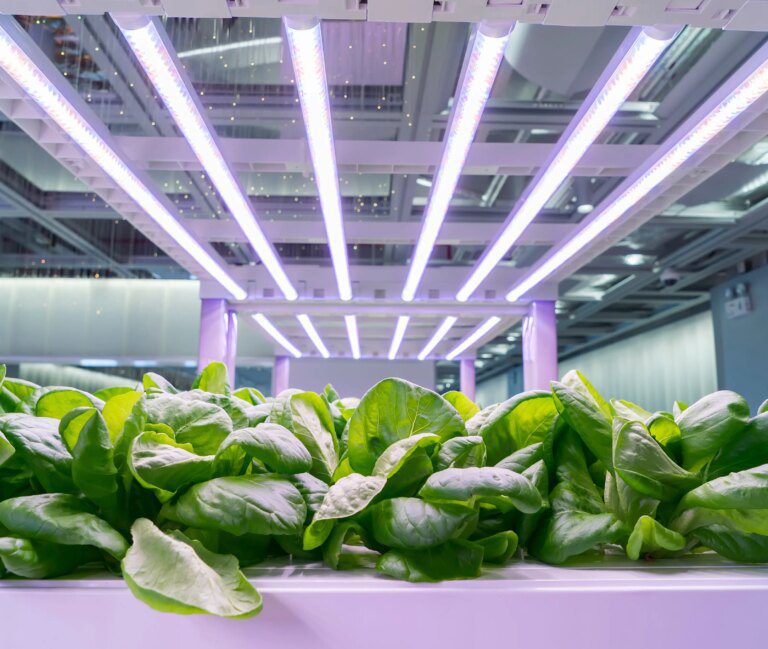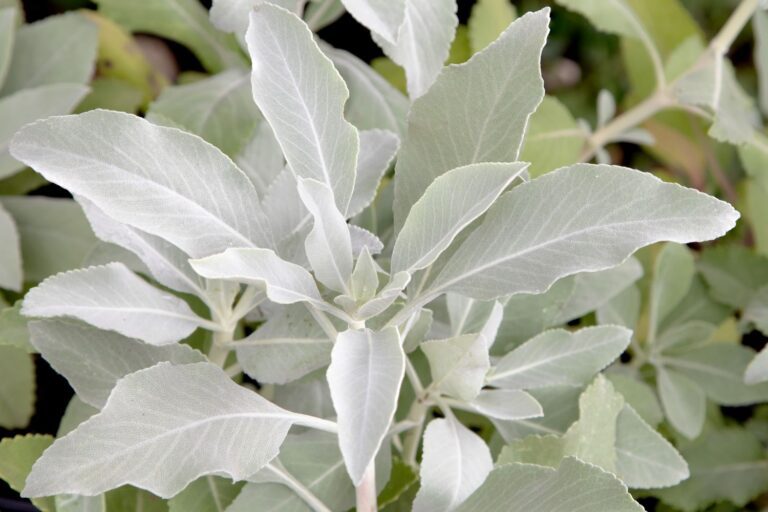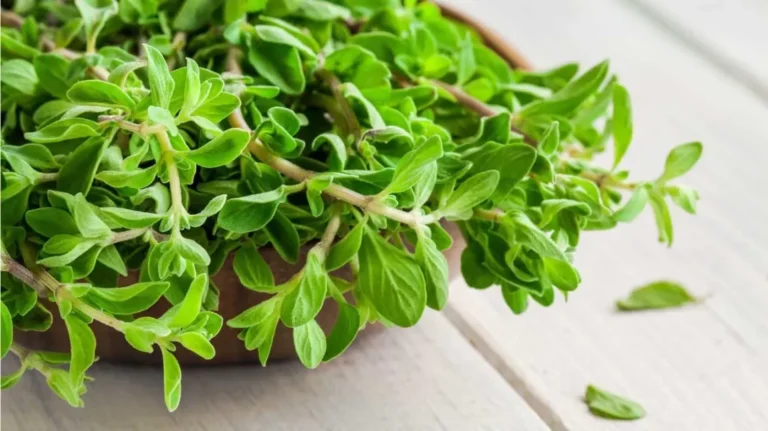What Is Spanish Moss? Growing This Epiphyte
Table of Contents
The Fascinating World of Spanish Moss
Spanish moss, known scientifically as Tillandsia usneoides, is a fascinating epiphytic plant that can be found in various habitats across North, Central, and South America. Despite its name, Spanish moss is not a true moss but rather a bromeliad that belongs to the pineapple family. Its unique appearance and behavior have captivated the attention of botanists, horticulturists, and nature enthusiasts for centuries.
One of the most intriguing aspects of Spanish moss is its epiphytic nature. Unlike traditional plants, Spanish moss does not require soil to grow and thrive. Instead, it attaches itself to host plants, such as trees and shrubs, using long, gray-green stems. These stems absorb nutrients and moisture from the air and rain, making Spanish moss a truly self-sufficient and low-maintenance plant. This adaptation allows Spanish moss to colonize a wide range of environments, from swamps and forests to urban landscapes, creating a beautiful and ethereal aesthetic wherever it grows.
The fascinating life cycle and ecological role of Spanish moss further contribute to its allure. It produces flowers that attract pollinators like moths and butterflies, and its seeds are dispersed by wind, allowing it to propagate and spread to new areas. Spanish moss also provides essential habitat and resources for various organisms, including birds, insects, and reptiles. Its cascading strands create a microcosm of biodiversity, supporting a complex ecosystem within its delicate web. By understanding the epiphytic nature of Spanish moss and appreciating its importance in nature, we can better comprehend the intricate relationships that exist within our environment.

Understanding the Epiphytic Nature of Spanish Moss
Spanish moss, scientifically known as Tillandsia usneoides, is a fascinating example of an epiphytic plant. Epiphytes are plants that grow on the surface of other plants, using them as support but not as a source of nutrients. This unique characteristic of Spanish moss allows it to thrive in a variety of environments, making it an alluring addition to any garden.
Unlike parasitic plants, which harm their hosts to survive, Spanish moss relies on air and rainfall for its nutritional needs. It obtains moisture and nutrients from the atmosphere, rainfall, and even from dust particles in the air. This remarkable adaptation allows Spanish moss to flourish in areas with poor soil quality or limited access to water, making it an excellent choice for hydroponics enthusiasts or those looking to enhance their garden with a low-maintenance plant.
The Origin and Distribution of Spanish Moss
Spanish moss (Tillandsia usneoides) is an intriguing epiphytic plant that can be found in various regions across the Americas. Although its name suggests a relation to moss, Spanish moss is actually not a moss at all, but rather a bromeliad. This unique plant can be found growing in the southeastern United States, as well as in parts of Mexico, Central America, and South America. Its distribution is largely influenced by environmental factors such as temperature, humidity, and the availability of suitable host trees.
The origin of Spanish moss can be traced back to its natural habitat in the warmer regions of the Americas. It is believed to have originated in the southern United States and gradually spread southward, adapting to different ecosystems along the way. Spanish moss has a remarkable ability to thrive in diverse environments, from coastal areas to swamps and even urban settings. Its adaptability and resilience make it a popular choice for gardeners and horticulturists seeking to add a touch of elegance and natural beauty to their landscapes.
| Aspect | Details |
|---|---|
| Scientific Name | Tillandsia usneoides |
| Common Name | Spanish Moss |
| Origin | Native to the southeastern United States |
| Distribution | Coastal regions from Virginia to Argentina |
| Habitat | Trees, particularly in humid and subtropical climates |
| Growth | Epiphytic, grows on trees without harming them |
| Uses | Ornamental purposes, crafts, and in traditional medicine |
The Unique Physical Characteristics of Spanish Moss
Spanish moss, known scientifically as Tillandsia usneoides, is a unique epiphytic plant that can be found hanging from trees across the southeastern United States and parts of Central and South America. One of the most striking physical characteristics of Spanish moss is its long, grayish-green tendrils that cascade down from branches, creating an ethereal appearance. These tendrils can range in length from just a few inches to several feet, providing a graceful and delicate quality to the plant.
Another distinctive feature of Spanish moss is its thread-like leaves, which are covered in silvery scales. These scales serve a crucial purpose for the plant, as they help to absorb and retain moisture from the air and rainfall. In fact, Spanish moss has no roots and obtains all of its nutrients and water through specialized scales on its leaves, known as trichomes. These trichomes not only aid in water absorption but also provide protection against excessive evaporation, allowing Spanish moss to thrive in hot and humid environments.
In addition to its notable appearance and unique method of obtaining nutrients, Spanish moss also plays an important ecological role in its environment. It provides habitat and nesting material for a variety of insects, birds, and other small organisms, making it an integral part of the ecosystem. Moreover, Spanish moss contributes to the overall biodiversity and health of the forests it calls home, serving as an indicator species for the quality of air and water in its surrounding environment. Its presence or absence can provide valuable insights into the overall health of a particular ecosystem.
Overall, the physical characteristics of Spanish moss make it a truly fascinating and distinctive plant. Its ethereal appearance, thread-like leaves, and ability to absorb moisture from the air all contribute to its unique adaptations for survival. Whether for its aesthetic appeal or ecological importance, Spanish moss continues to captivate and intrigue both nature enthusiasts and scientists alike.
Choosing the Ideal Environment for Growing Spanish Moss
When it comes to growing Spanish moss, it is crucial to choose the ideal environment that will support its growth and flourishing. Spanish moss, or Tillandsia usneoides, is an epiphytic plant, meaning it does not require soil to grow and instead relies on other plants or structures for support. To ensure optimal growth and overall health, it is essential to consider factors such as light, humidity, and temperature.
First and foremost, Spanish moss thrives in areas with bright indirect light. While it can tolerate some shade, it prefers dappled sunlight or filtered light that helps replicate its natural habitat in the subtropical and tropical regions. Placing it near a north-facing window or under shade cloth can provide the perfect balance of light for its growth.
Humidity is another critical aspect to consider when choosing the ideal environment for Spanish moss. With its origin in humid environments, it requires adequate moisture levels to thrive. Aim for a humidity level of around 50-60% for optimal growth. In drier climates or indoor settings, misting the moss regularly or setting up a humidifier nearby can help maintain the required humidity.
Furthermore, Spanish moss prefers temperatures between 50-90°F (10-32°C), making it well-suited for outdoor cultivation in most regions. However, it is worth noting that Spanish moss can tolerate temperatures below freezing for short periods, but prolonged exposure to freezing temperatures can harm the plant. Therefore, it is crucial to protect it from extreme cold, especially in colder regions, either by growing it indoors or providing proper insulation or covering during winter.
Creating an ideal environment with suitable light, humidity, and temperature levels is key to successfully growing Spanish moss. By considering these factors and providing the necessary care, you can cultivate stunning displays of this epiphytic marvel in your garden or indoor spaces.

Propagation Techniques for Spanish Moss
Spanish moss (Tillandsia usneoides) is a unique epiphytic plant that can be propagated through various techniques. One common method is through division. To propagate Spanish moss through division, carefully separate the clumps of moss, making sure to keep the strands intact. Each clump can then be attached to a new support structure, such as a tree branch or wire frame, using fishing line or a similar material. By providing a stable support, the moss will continue to grow and develop, eventually forming new clumps.
Another propagation technique for Spanish moss is through seed sowing. seeds can be collected from mature seed pods found on the moss. These seeds can be sown on a suitable growth medium, such as a mixture of peat and sand, and lightly covered. Maintaining high humidity and keeping the medium moist will promote germination. Once seedlings have developed, they can be transferred to a suitable support structure for further growth and establishment.
Both division and seed sowing are effective propagation methods for Spanish moss. Depending on the desired outcome and available resources, gardeners and enthusiasts can choose the technique that best suits their needs. Whether through division or seed sowing, propagating Spanish moss allows for its expansion and cultivation, adding to the allure of this fascinating epiphytic plant.
Caring for Spanish Moss: Light, Water, and Temperature Requirements
Spanish moss, scientifically known as Tillandsia usneoides, is an epiphytic plant that primarily grows in warm and humid environments. As an epiphyte, it relies on other plants, such as trees, for support, but does not harm them in any way. Its unique physical characteristics allow it to thrive in various conditions, making it a popular choice for both indoor and outdoor gardens.
Light is an essential factor in caring for Spanish moss. This plant prefers bright but indirect light, making it ideal for shaded areas or spots with filtered sunlight. Direct sunlight can scorch the delicate foliage, leading to browning and damage. However, insufficient light can result in slow growth and the plant losing its vibrant green color. Finding the right balance is crucial to maintaining a healthy and thriving Spanish moss.
Watering Spanish moss requires a delicate touch. Unlike conventional plants, Spanish moss does not have roots to absorb water from the ground. Instead, it relies on absorbing moisture and nutrients directly from the air and rainfall. Mist the plant lightly with water once or twice a week, or more frequently in hot and dry climates. Avoid over-watering, as excess moisture can lead to fungal diseases and rot. Regularly monitor the moisture levels and adjust the watering accordingly to provide the right amount of moisture for your Spanish moss to flourish.

Common Pests and Diseases Affecting Spanish Moss
Spanish moss is an epiphytic plant that typically thrives in warm and humid environments. While it is generally low-maintenance and resistant to many pests and diseases, there are a few common issues that gardeners may encounter. One such pest is the Spanish moss mite (Tetranychus ludeni), a tiny arachnid that can infest the foliage and cause yellowing and browning of the moss. Regular inspections of the plants can help identify mite infestations early on, and prompt action can prevent significant damage.
Another common problem for Spanish moss is the presence of scale insects, particularly the cottony cushion scale (Icerya purchasi). These insects attach themselves to the moss and suck out its juices, leading to the development of a sticky residue known as honeydew. This honeydew can attract ants and other insects, further exacerbating the problem. It is important to regularly inspect Spanish moss for signs of scale insects and take appropriate measures, such as introducing natural predators or using organic insecticides, to mitigate infestations. By staying vigilant and addressing these issues promptly, gardeners can ensure the health and vitality of their Spanish moss plants.
Harvesting and Utilizing Spanish Moss
Harvesting and Utilizing Spanish Moss can be a rewarding experience for gardening enthusiasts, as this unique plant has a range of practical applications. When it comes to harvesting Spanish Moss, it’s important to ensure that you do so in a sustainable and responsible manner. Since Spanish Moss is an epiphytic plant, it relies on other trees or surfaces for support, without drawing nutrients directly from them. Therefore, it’s crucial to avoid harming the host trees during the harvesting process.
Once you have successfully harvested Spanish Moss, you can explore its various uses. One popular utilization is in crafting and decoration. Due to its delicate and ethereal appearance, Spanish Moss is often utilized in floral arrangements, wreaths, and other decorative pieces. Its long, trailing strands can add a touch of elegance and whimsy to any creation. Furthermore, Spanish Moss can also be used in the world of fashion, as it has been employed to make unique and eco-friendly accessories like hats and jewelry. Its soft texture and natural color make it a versatile material for artistic exploration.
| Aspect | Description |
|---|---|
| Plant Name | Spanish Moss (Tillandsia usneoides) |
| Description | Spanish moss is an epiphytic flowering plant that grows upon larger trees in tropical and subtropical climates. It’s characterized by long, gray-green, threadlike stems. |
| Harvesting Method | Spanish moss is typically harvested by hand. Harvesters climb trees or use long poles with hooks to pull down the moss. |
| Utilization | 1. Crafts: Spanish moss is often used in crafts such as floral arrangements, wreaths, and decorative hangings. |
| 2. Mulch: It can be used as mulch or bedding material for plants, helping to retain moisture and suppress weed growth. | |
| 3. Animal Bedding: Spanish moss is sometimes used as bedding material for animals, particularly for reptiles and birds. | |
| 4. Insulation: Historically, Spanish moss was used as insulation in buildings and vehicles, although its popularity for this purpose has diminished over time. | |
| 5. Stuffing: It has been used as a stuffing material for furniture and mattresses. | |
| Environmental Impact | Harvesting Spanish moss in moderation doesn’t significantly impact its ecosystem. However, overharvesting can lead to habitat destruction for certain species. |
| Sustainability | Sustainable harvesting practices involve leaving enough moss on trees to allow for regrowth and not harming the host trees during harvesting. |
Exploring Mythology and Cultural Significance of Spanish Moss
Spanish moss, known scientifically as Tillandsia usneoides, is a remarkable plant with a rich mythology and cultural significance that stretches back centuries. As its name suggests, Spanish moss was originally believed to have originated in Spain and was spread by Spanish explorers during their expeditions across the New World. However, recent research has indicated that this fascinating epiphytic plant actually originated in the Americas, specifically in the Southeastern United States and the Caribbean.
The mythology surrounding Spanish moss is as diverse as its distribution. In some Native American cultures, it is believed that Spanish moss is the hair of a spirit or a ghostly figure that brings good luck. This belief may be rooted in the plant’s ethereal appearance, as it hangs from trees in long, draping strands that sway gently in the breeze. In other cultures, Spanish moss is associated with melancholy and death. Its gray, hanging strands have an otherworldly quality that evokes thoughts of moss-covered tombs and long-forgotten graveyards. This perception has been captured in various pieces of art and literature, further emphasizing the cultural significance of this unique plant.
What is the cultural significance of Spanish Moss?
Spanish Moss holds cultural significance in various regions, often associated with folklore and traditions. In Southern folklore, it is believed to bring good luck and ward off evil spirits. It has also been used in Native American rituals and as a symbol of resilience and adaptability.
Can Spanish Moss be grown indoors?
Yes, Spanish Moss can be grown indoors. It thrives in bright, indirect light and requires high humidity. Hanging it near a window or misting it regularly can help create a suitable environment for its growth indoors.
Are there any specific rituals or ceremonies associated with Spanish Moss?
Yes, Spanish Moss has been used in certain rituals and ceremonies. For example, in some Native American traditions, it is used as a symbol of protection and is incorporated into healing rituals. Additionally, it has been used in crafting dreamcatchers and other symbolic objects.
Can Spanish Moss be used for crafting purposes?
Yes, Spanish Moss is commonly used in arts and crafts. It can be used for creating wreaths, floral arrangements, and decorations. Its unique texture and appearance make it a popular choice for adding a touch of nature to various craft projects.
How does Spanish Moss obtain nutrients if it is an epiphyte?
Spanish Moss is an epiphyte, meaning it grows on other plants but does not rely on them for nutrients. It absorbs moisture and nutrients from the air and rain, as well as through its specialized scales that capture organic debris and dust from the environment.
Does Spanish Moss have any medicinal properties?
While Spanish Moss does not have any widely recognized medicinal properties, it has been used in traditional folk medicine for various purposes. Some historical uses include treating skin irritations, easing headaches, and as a remedy for digestive issues. However, it is important to consult a healthcare professional before using it for any medicinal purposes.
Is Spanish Moss invasive?
Spanish Moss is not considered invasive as it does not harm or kill the trees it grows on. It is a naturally occurring epiphyte that coexists with its host plants without causing significant damage.
Can Spanish Moss be composted?
Yes, Spanish Moss can be composted. It is rich in organic matter and can contribute to the nutrient content of compost. However, it is important to ensure that the Spanish Moss is free of any pests or diseases before adding it to the compost pile.
Are there any specific precautions to take while harvesting Spanish Moss?
When harvesting Spanish Moss, it is important to be mindful of the environment and the well-being of the host tree. Avoid removing excessive amounts of Spanish Moss from a single tree, as it can affect the tree’s health. Additionally, be cautious of any potential hazards such as insects, spiders, or sharp branches while handling the moss.

Ankit Garg is a seasoned writer at South El Monte Hydroponics, blending his passion for agriculture with a penchant for storytelling. With a degree in Agricultural Sciences from a prestigious institution, Ankit’s expertise lies in hydroponics, sustainable farming, and innovative cultivation techniques. His keen interest in exploring the intersection of technology and agriculture has led him to delve deep into the realm of hydroponic farming, where he thrives in uncovering the latest advancements and sharing insights through his engaging prose. Ankit’s dedication to promoting eco-friendly and efficient farming practices through his writing has earned him recognition within the agricultural community and beyond.







